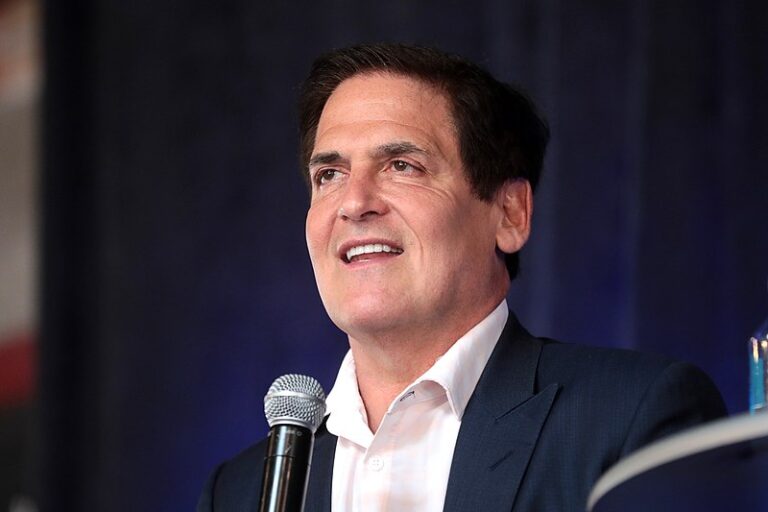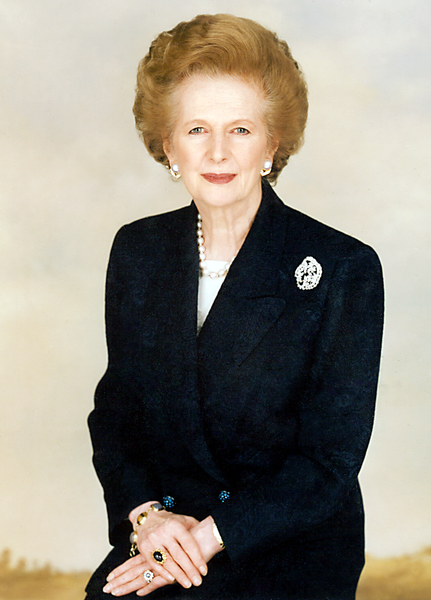Anne Mulcahy: Leading with Empathy, Innovation, and Agility
 The Inspiring Leadership Journey of Anne Mulcahy
The Inspiring Leadership Journey of Anne Mulcahy
Anne Mulcahy is a renowned leader who has made a significant impact in the world of business. Mulcahy is best known for her leadership journey at Xerox, where she served as CEO from 2001 to 2009. During her tenure, Mulcahy transformed Xerox from a struggling company on the brink of bankruptcy to a thriving organization with a renewed focus on innovation and customer-centricity. Mulcahy’s leadership journey is filled with valuable lessons for current and aspiring leaders. In this article, we will explore Mulcahy’s leadership style and the lessons we can learn from her experiences.
Mulcahy’s journey to becoming a leader began early in her career. She started working at Xerox as a field sales representative in 1976, working her way up to various positions, including Vice President for Human Resources, and eventually CEO. Throughout her career, Mulcahy faced numerous challenges, including taking over a company on the brink of bankruptcy and navigating the 9/11 crisis.
Despite the challenges she faced, Mulcahy remained committed to her leadership principles, which included leading with empathy, listening and communication, and creating a culture of innovation and agility. Mulcahy’s leadership style was characterized by her ability to connect with people on a personal level, communicate effectively, and inspire teams to achieve their goals.
Mulcahy’s leadership journey is a testament to the power of effective leadership. Her success at Xerox is a result of her commitment to her leadership principles, her willingness to take risks and make tough decisions, and her ability to inspire others to achieve their goals. In the following sections, we will delve deeper into Mulcahy’s leadership journey, examining the challenges she faced, the strategies she employed, and the lessons we can learn from her experiences.
Early Career and Leadership Journey
Anne Mulcahy’s journey to becoming a successful leader started with her early career at Xerox. She started as a field sales representative in 1976 and worked her way up the ranks, holding various positions such as Vice President for Human Resources, Staff Vice President, and President of Xerox’s General Markets Operations.
Mulcahy’s early career at Xerox was a crucial foundation for her leadership style. She learned the importance of building relationships, collaborating with team members, and creating a positive work culture. As Vice President for Human Resources, Mulcahy played a significant role in developing programs to promote diversity and inclusivity, which helped Xerox become an industry leader in those areas.
Mulcahy’s leadership style was also influenced by her early career experiences. She was known for being approachable and connecting with people on a personal level. Her ability to communicate effectively and inspire teams to achieve their goals became a hallmark of her leadership style.
Mulcahy’s leadership journey took a significant turn when she was appointed CEO of Xerox in 2001. She took over a company that was facing numerous challenges, including declining revenues, mounting debt, and increased competition. At the time, many industry analysts had written off Xerox as a company on the brink of bankruptcy.
However, Mulcahy was undeterred by the challenges she faced. She quickly set out to develop a turnaround strategy that focused on innovation, customer-centricity, and employee engagement. She recognized that the company’s success was dependent on the collective efforts of its employees and stakeholders, and therefore, she worked hard to create a culture of collaboration and trust.
Mulcahy’s leadership journey at Xerox was not without its challenges. She faced criticism from some stakeholders who were skeptical about her ability to turn the company around. However, she remained steadfast in her commitment to her leadership principles, and her efforts eventually paid off. Under her leadership, Xerox transformed into a thriving organization that embraced innovation and agility.
Mulcahy’s early career and leadership journey provided the foundation for her success as a leader. Her ability to build relationships, communicate effectively, and inspire teams to achieve their goals became the hallmark of her leadership style. Her tenure as CEO of Xerox is a testament to the power of effective leadership and the importance of perseverance in the face of challenges.
Leadership Challenges at Xerox
When Anne Mulcahy became CEO of Xerox in 2001, she inherited a company that was facing significant challenges. Xerox was struggling with declining revenues, mounting debt, and increased competition. Many industry analysts had written off the company as being on the brink of bankruptcy.
Mulcahy recognized that the key to turning Xerox around was to create a culture of innovation, customer-centricity, and employee engagement. She believed that Xerox’s success was dependent on the collective efforts of its employees and stakeholders. Therefore, she focused on building relationships, communicating effectively, and inspiring teams to achieve their goals.
One of Mulcahy’s first challenges as CEO was to address Xerox’s financial situation. She developed a turnaround strategy that involved reducing costs, selling non-core businesses, and focusing on the company’s core strengths. Mulcahy also implemented a customer-centric approach that involved listening to customers and developing solutions that met their needs.
Mulcahy’s leadership style was characterized by her ability to lead with empathy and emotional intelligence. She recognized that Xerox’s employees were the key to the company’s success, and therefore, she focused on creating a positive work culture that fostered trust and collaboration. She believed that it was essential to connect with employees on a personal level and understand their concerns and challenges.
Mulcahy’s leadership also involved making tough decisions that were necessary for the company’s survival. She recognized that Xerox needed to make significant changes to remain competitive in the marketplace. She implemented a rigorous cost-cutting program that involved layoffs and restructuring. Although these decisions were difficult, Mulcahy believed that they were necessary to ensure the company’s long-term viability.
Despite the challenges she faced, Mulcahy remained committed to her leadership principles. She communicated effectively with stakeholders and employees, inspiring them to embrace change and focus on the future. She recognized the importance of collaboration and teamwork, and therefore, she fostered a culture of innovation and agility that enabled Xerox to adapt to changing market conditions.
Mulcahy’s leadership challenges at Xerox provide valuable lessons for leaders in any industry. Her ability to lead with empathy, make tough decisions, and focus on the long-term success of the company is a testament to the power of effective leadership. Mulcahy’s success at Xerox is a result of her commitment to her leadership principles and her willingness to take risks and make tough decisions.
Leading with Empathy and Emotional Intelligence
Anne Mulcahy’s leadership style was characterized by her ability to lead with empathy and emotional intelligence. She recognized that Xerox’s success was dependent on the collective efforts of its employees and stakeholders, and therefore, she focused on building relationships, communicating effectively, and inspiring teams to achieve their goals.
Mulcahy believed that empathy was a critical component of effective leadership. She recognized the importance of understanding the needs and concerns of employees and stakeholders, and she made a concerted effort to connect with them on a personal level. Mulcahy believed that empathy was essential for building trust and creating a positive work culture.
In addition to empathy, Mulcahy also emphasized the importance of emotional intelligence in leadership. She believed that effective leaders needed to be aware of their emotions and the emotions of others. By understanding the emotional landscape of the organization, leaders could make more informed decisions and develop strategies that met the needs of employees and stakeholders.
Mulcahy’s leadership style was also characterized by her ability to communicate effectively. She recognized that communication was essential for building trust and fostering collaboration. She made a concerted effort to listen to employees and stakeholders, and she encouraged open and honest communication throughout the organization.
Mulcahy’s approach to leadership with empathy and emotional intelligence is evident in her handling of the 9/11 crisis. In the aftermath of the tragedy, Xerox faced significant challenges, including the loss of key customers and the disruption of its supply chain. Mulcahy recognized that her employees were experiencing intense emotions, and therefore, she focused on providing emotional support and reassurance.
Mulcahy also recognized that Xerox needed to adapt quickly to the changing market conditions. She encouraged innovation and experimentation, and she worked closely with employees and stakeholders to develop solutions that met the needs of customers.
Anne Mulcahy’s leadership style is a testament to the power of leading with empathy and emotional intelligence. By building relationships, communicating effectively, and inspiring teams to achieve their goals, Mulcahy was able to transform Xerox from a struggling company to a thriving organization. Mulcahy’s success is a result of her commitment to her leadership principles, and her ability to connect with employees and stakeholders on a personal level. Her approach to leadership provides valuable lessons for leaders in any industry.
The Importance of Listening and Communication
One of the key elements of Anne Mulcahy’s leadership style was her emphasis on listening and communication. Mulcahy recognized that effective communication was critical for building trust and fostering collaboration, and she believed that leaders needed to listen actively to employees and stakeholders to understand their needs and concerns.
Mulcahy’s approach to communication involved both formal and informal channels. She held regular town hall meetings where she could communicate directly with employees and answer their questions. She also encouraged open and honest communication throughout the organization, making it clear that feedback and suggestions were welcomed.
Mulcahy believed that listening was an essential component of effective communication. She made a concerted effort to listen actively to employees and stakeholders, seeking to understand their perspectives and concerns. By listening carefully, Mulcahy was able to develop a better understanding of the challenges facing the organization and develop strategies to address them.
Mulcahy’s approach to listening and communication was evident in her handling of the 9/11 crisis. She recognized that Xerox’s employees and stakeholders were experiencing intense emotions, and therefore, she made a concerted effort to communicate regularly and provide emotional support. She held town hall meetings, sent regular updates, and made herself available to employees who needed to talk.
Mulcahy’s approach to listening and communication was also evident in her efforts to create a positive work culture. She recognized that employees needed to feel valued and heard, and therefore, she made a concerted effort to create an open and inclusive work environment. By encouraging feedback and suggestions, Mulcahy was able to foster a culture of collaboration and trust.
In addition to listening, Mulcahy also recognized the importance of clear and concise communication. She believed that leaders needed to communicate their vision and goals clearly to employees and stakeholders, making it clear what was expected of them. Mulcahy also emphasized the importance of transparency in communication, believing that employees and stakeholders needed to be kept informed of the organization’s progress and challenges.
Anne Mulcahy’s emphasis on listening and communication provides valuable lessons for leaders in any industry. By listening actively to employees and stakeholders, communicating clearly and transparently, and creating a positive work culture, leaders can build trust, foster collaboration, and drive organizational success. Mulcahy’s approach to communication is a testament to the power of effective leadership, and her success at Xerox is a result of her commitment to these principles.
Leading Through Crisis
One of the defining moments of Anne Mulcahy’s leadership journey at Xerox was her handling of the 9/11 crisis. The terrorist attacks on September 11, 2001, had a profound impact on the business world, and Xerox was no exception. The company faced significant challenges, including the loss of key customers and the disruption of its supply chain.
Mulcahy recognized that Xerox needed to adapt quickly to the changing market conditions, and therefore, she developed a crisis management strategy that focused on employee well-being, customer satisfaction, and financial stability.
The first priority for Mulcahy was to ensure the well-being of Xerox’s employees. She recognized that employees were experiencing intense emotions in the aftermath of the tragedy, and therefore, she made a concerted effort to provide emotional support and reassurance. She held town hall meetings, sent regular updates, and made herself available to employees who needed to talk.
Mulcahy also recognized the importance of maintaining customer satisfaction during the crisis. She made a concerted effort to communicate regularly with customers, providing them with updates on the status of their orders and reassuring them that Xerox was committed to meeting their needs.
In addition to focusing on employee well-being and customer satisfaction, Mulcahy also recognized the importance of financial stability. She implemented a cost-cutting program that involved layoffs and restructuring, recognizing that these were necessary steps to ensure the long-term viability of the company.
Mulcahy’s approach to leading through crisis was characterized by her ability to remain calm and focused under pressure. She recognized that Xerox’s success was dependent on her ability to make tough decisions and adapt quickly to changing market conditions. She also recognized the importance of collaboration and teamwork, working closely with employees and stakeholders to develop solutions that met the needs of customers.
Anne Mulcahy’s leadership during the 9/11 crisis provides valuable lessons for leaders in any industry. By focusing on employee well-being, customer satisfaction, and financial stability, Mulcahy was able to lead Xerox through a challenging period and emerge stronger and more resilient. Mulcahy’s approach to leading through crisis is a testament to the power of effective leadership, and her success at Xerox is a result of her commitment to these principles.
Creating a Culture of Innovation and Agility
Anne Mulcahy’s tenure as CEO of Xerox was characterized by her focus on creating a culture of innovation and agility. Mulcahy recognized that innovation was essential for Xerox to remain competitive in the marketplace, and therefore, she made a concerted effort to encourage experimentation and creativity throughout the organization.
Mulcahy’s approach to innovation involved both incremental improvements and radical changes. She recognized the importance of developing new products and services that met the changing needs of customers, and therefore, she invested heavily in research and development. At the same time, Mulcahy also emphasized the importance of continuous improvement, encouraging employees to identify opportunities for small improvements that could lead to significant gains over time.
Mulcahy’s emphasis on innovation was also evident in her approach to agility. She recognized that Xerox needed to be able to adapt quickly to changing market conditions, and therefore, she encouraged a culture of agility and flexibility. She implemented a structure that enabled the organization to respond quickly to changing customer needs, and she empowered employees at all levels to make decisions and take risks.
Mulcahy’s approach to innovation and agility was evident in Xerox’s transformation into a leader in the digital printing market. Under Mulcahy’s leadership, Xerox invested heavily in research and development, and the company developed new products that enabled it to gain a significant market share. Mulcahy also recognized the importance of strategic partnerships, and she worked closely with other companies to develop new technologies and expand Xerox’s reach.
Mulcahy’s approach to innovation and agility was also evident in Xerox’s response to the 2008 financial crisis. In the face of declining revenues and mounting debt, Mulcahy recognized that Xerox needed to make significant changes to remain competitive. She implemented a cost-cutting program that involved layoffs and restructuring, but she also recognized the importance of innovation in driving growth. Mulcahy invested heavily in new technologies and expanded Xerox’s reach into emerging markets, positioning the company for long-term success.
Anne Mulcahy’s focus on creating a culture of innovation and agility provides valuable lessons for leaders in any industry. By encouraging experimentation and creativity, empowering employees to take risks and make decisions, and investing in research and development, leaders can position their organizations for long-term success. Mulcahy’s success at Xerox is a testament to the power of effective leadership and the importance of innovation and agility in driving organizational success.
Anne Mulcahy’s Legacy: A Testament to the Power of Effective Leadership
Anne Mulcahy’s legacy and impact on Xerox and the business world as a whole are significant. Under her leadership, Xerox transformed from a struggling company to a thriving organization that embraced innovation and agility. Mulcahy’s focus on building relationships, leading with empathy, and creating a culture of innovation and agility, set the stage for the company’s continued success.
Mulcahy’s impact on Xerox can be seen in the company’s financial performance. During her tenure as CEO, Xerox’s revenues increased, and the company emerged from a period of financial instability to become a leader in the digital printing market. Mulcahy’s focus on innovation and agility enabled Xerox to adapt quickly to changing market conditions and position the company for long-term success.
Mulcahy’s impact on the business world extends beyond Xerox. She is recognized as a trailblazer for women in business and has been honored with numerous awards and accolades. In 2008, she was named one of the 100 most powerful women in the world by Forbes magazine, and in 2011, she was inducted into the Women’s Hall of Fame.
Mulcahy’s impact on the business world is also evident in her advocacy for diversity and inclusivity. As Vice President for Human Resources at Xerox, Mulcahy played a significant role in developing programs to promote diversity and inclusivity. She recognized the importance of diversity in driving innovation and creativity, and she made a concerted effort to create a work environment that was welcoming to all employees.
Mulcahy’s impact on Xerox and the business world as a whole is a testament to the power of effective leadership. Her focus on building relationships, leading with empathy, and creating a culture of innovation and agility, set the stage for Xerox’s continued success. Mulcahy’s advocacy for diversity and inclusivity also highlights the importance of creating a work environment that is welcoming to all employees.
In conclusion, Anne Mulcahy’s legacy and impact on Xerox and the business world as a whole are significant. Her leadership journey provides valuable lessons for leaders in any industry, highlighting the importance of leading with empathy, creating a culture of innovation and agility, and advocating for diversity and inclusivity. Mulcahy’s success at Xerox is a testament to the power of effective leadership, and her legacy will continue to inspire and influence leaders for years to come.






